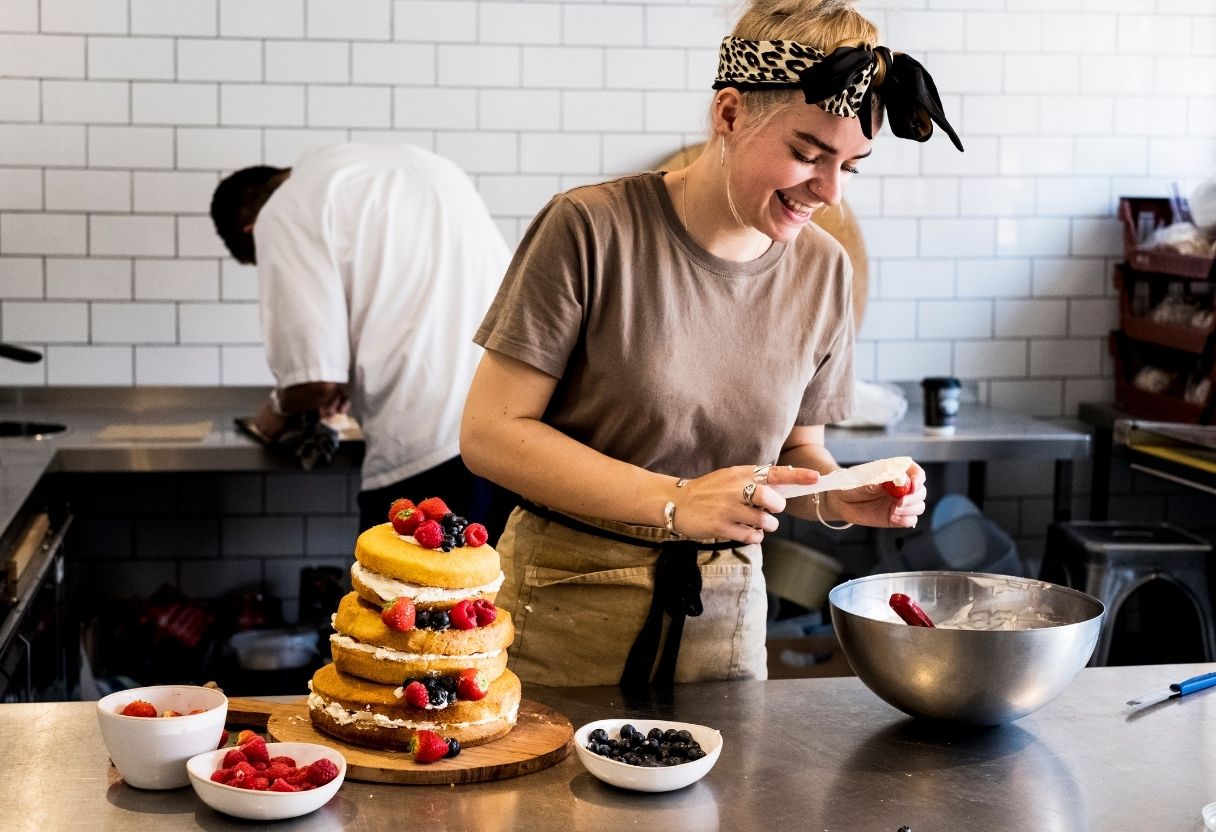GlacierGrid Temperature Monitoring for Cloud Kitchen Food Safety

The COVID-19 pandemic has undoubtedly changed the hospitality industry. 2020 saw 110,000 restaurants close in the US alone. The situation forced restaurateurs to utilize creative solutions to help their businesses survive.
One of these breakthroughs was the widespread adoption of shared commercial kitchens, commonly referred to as cloud kitchens. As restaurants reduced or eliminated in-person dining, the necessity of a singular dedicated commissary space also lessened. To reduce overhead costs, restaurateurs and chefs banded together to share space within centrally owned spaces.
However, with diverse operations comes diverse needs in facilities and the safety precautions associated with them. Read on to learn how remote monitoring helps cloud kitchen operators adhere to food safety standards and regulations.
The evolution of the cloud kitchen
In 2020, Social distancing was a significant catalyst that changed the traditional restaurant model. In a 2020 poll of restaurant patrons, 23% reported that they would only be ordering delivery or takeout for the remainder of the pandemic. Without in-house dining revenue, the overhead costs of operating a traditional restaurant became prohibitive.
At the same time, demand for meal delivery rose. Uber Eats reported a 135% year-over-year increase in orders from 2019-2020. With the widespread shift to delivery, restaurateurs adapted by conducting service for various restaurants under one roof simultaneously. By mid-2020, the US alone boasted 1500 cloud kitchens.
Even as social distancing requirements subside, the enthusiasm for delivery continues to be high. The global appetite for food delivery has continued to grow by 10% in 2021 despite the gradual return to normalcy. As a result, experts predict that cloud kitchens will become a $1 Trillion industry by 2030.
Food safety regulations
While cloud kitchens are poised to continue their prevalence, a new issue arises. With a diverse array of restaurants under one roof, operators are having issues facilitating food safety protocols.
The biggest issue for cloud kitchen operators in regards to safety is accountability. Typically, restaurants are evaluated by the health department of the jurisdiction they are located in.
From there, each restaurant receives a numbered score or letter grade. When health inspectors find violations of the health code during an inspection, operators should expect repercussions.
Some of the ramifications for health code violations range in severity from fines and temporary shutdowns to lawsuits and permanent closure.
Cold storage is a common source of health code violations. This is because of the delicate nature of perishables foods stored in areas like walk-ins, coolers, and low-boys. Perishable food, such as meats or greens, held at temperatures higher than 40°F for longer than two hours is said to have entered the food safety danger zone. At these temperatures, bacteria thrive, which increases the risk that food-borne illnesses like salmonella may infect customers.
However, if the health department inspects a cloud kitchen and finds a violation, who should be held responsible? Centralized groups, like Zuul or Kitchens United, own many of today’s cloud kitchens. These organizations are generally held responsible for the nonobservance of health ordinances. That means failed inspections and the associated penalties become their responsibility even though they did not commit the infraction themselves.
Temperature monitoring in a cloud kitchen
While the consequences of health code violations are intimidating, they are avoidable.
To promote food safety, cloud kitchen operators may find a solution in remote monitoring technology. Remote monitoring technology serves as a replacement for manual temperature checks. With remote monitoring, you can replace thermometers with wireless digital sensors and paper logs with mobile apps.
When an inspection does occur, operators can prove that appropriate food safety protocols are followed, lessening the chance of negative consequences.
GlacierGrid is one remote monitoring system that’s making waves in the restaurant industry. Built specifically for hospitality, GlacierGrid tracks temperature and humidity across facilities seamlessly. With no-hassle installation, a fully loaded web dashboard, and a convenient mobile app, operators can rest easy knowing that their cloud kitchen operates as a unified entity.
To see for yourself how GlacierGrid can protect your cloud kitchen, click below to buy now.







